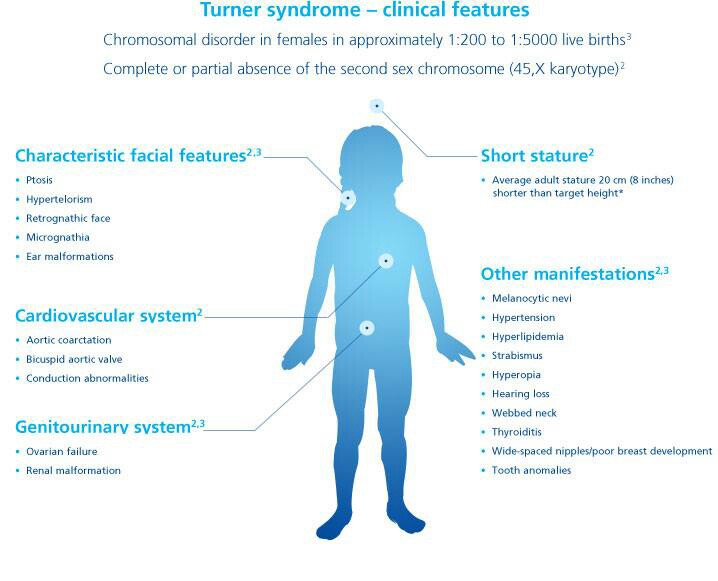Turner syndrome is a genetic disorder that affects about 1 in every 2,000 baby girls and only affects females.
A girl with Turner syndrome only has one normal X sex chromosome, rather than the usual two (XX).
This chromosome variation happens randomly when the baby is conceived in the womb. It is not linked to the mother’s age.
Characteristics of Turner syndrome
Females with Turner syndrome often have a wide range of symptoms and some distinctive characteristics. Almost all girls with Turner syndrome:
are shorter than average
have underdeveloped ovaries (female reproductive organs), resulting in a lack of monthly periods and infertility
As height and sexual development are the two main characteristics, Turner syndrome may not be diagnosed until a girl fails to show sexual development associated with puberty, usually between the ages of 8 and 14 years.
Other characteristics of Turner syndrome can vary significantly between individuals.
Treating Turner syndrome
There is no cure for Turner syndrome, but many of the associated symptoms can be treated.
Girls and women with Turner syndrome will need to have regular health checks of their heart, kidneys and reproductive system throughout their lives. However, it is usually possible to lead a relatively normal and healthy life.
Life expectancy is slightly reduced, but it can be improved with regular health checks to identify and treat potential problems at an early stage.
